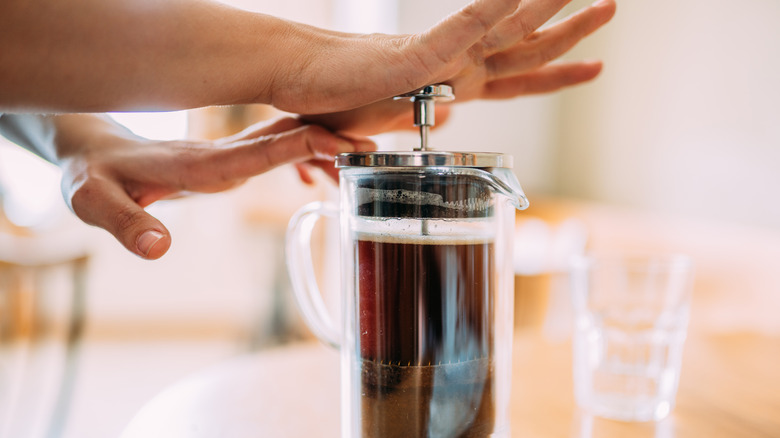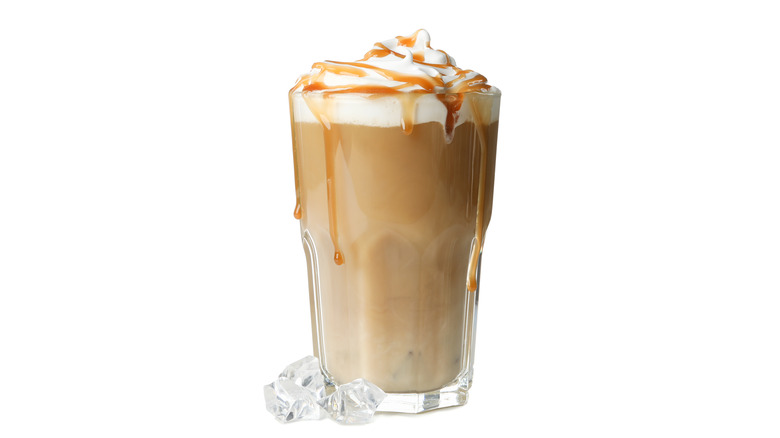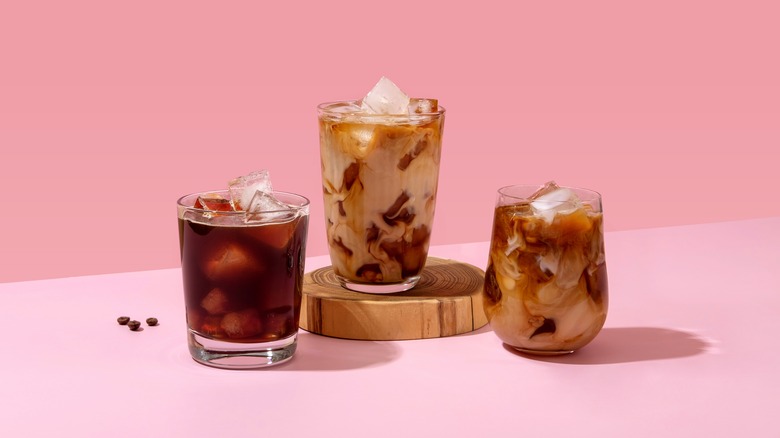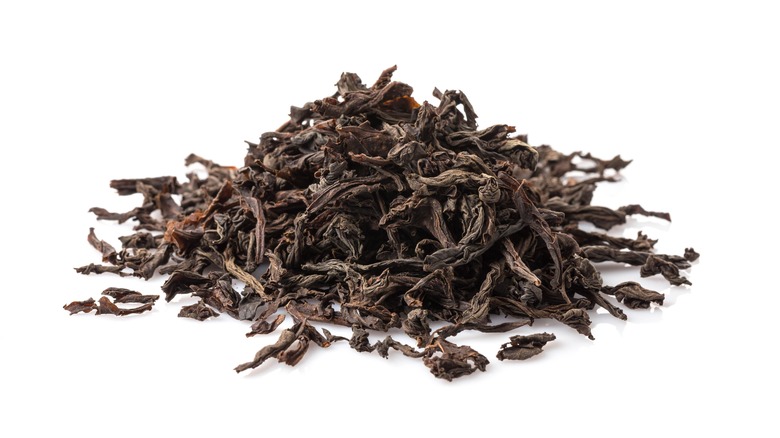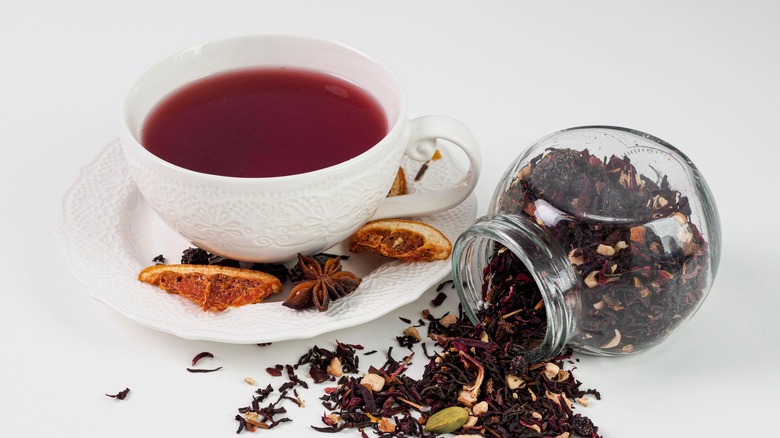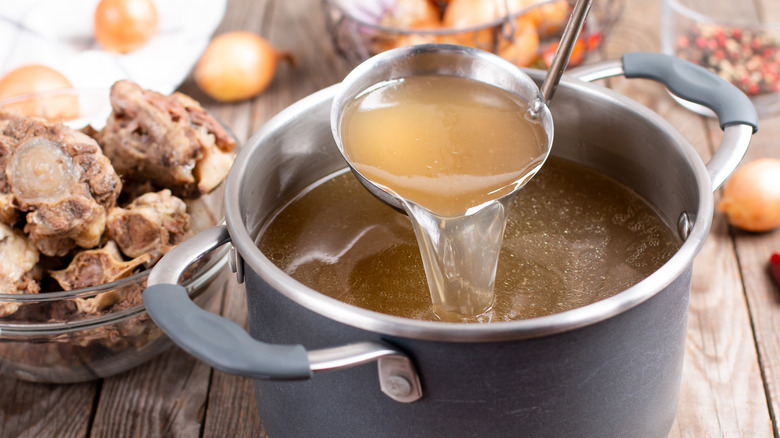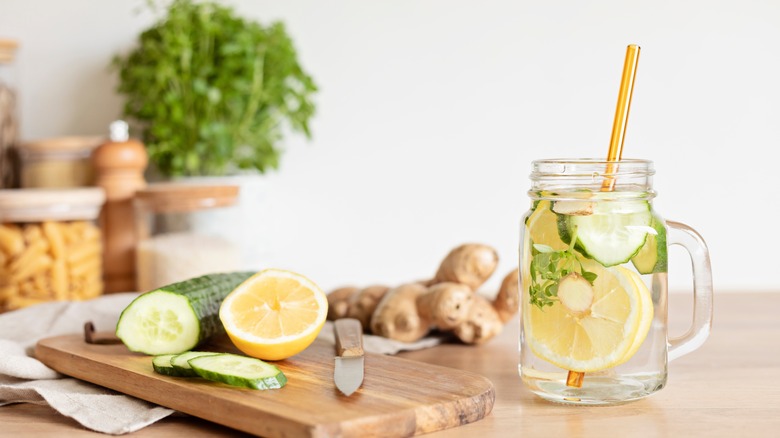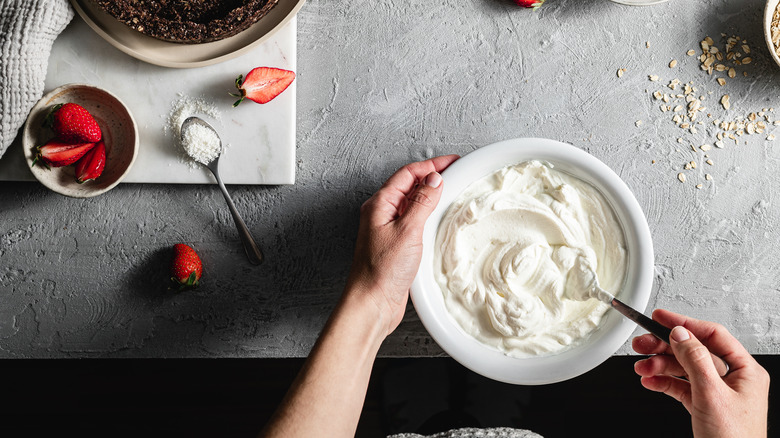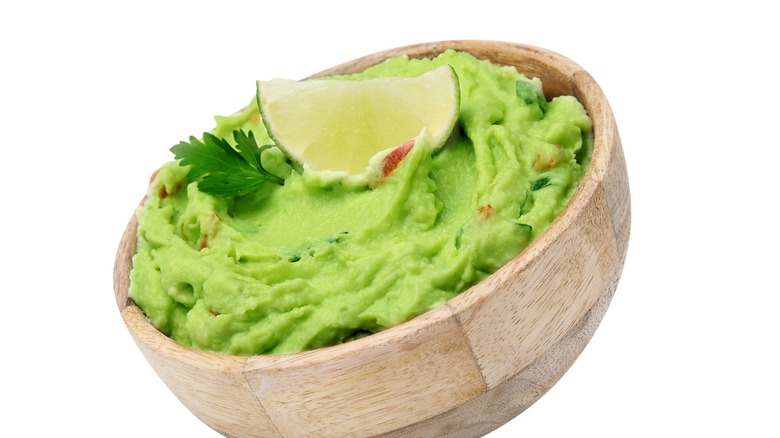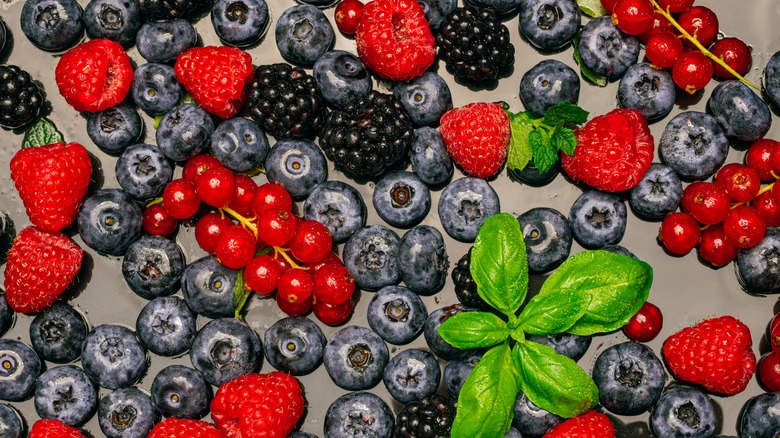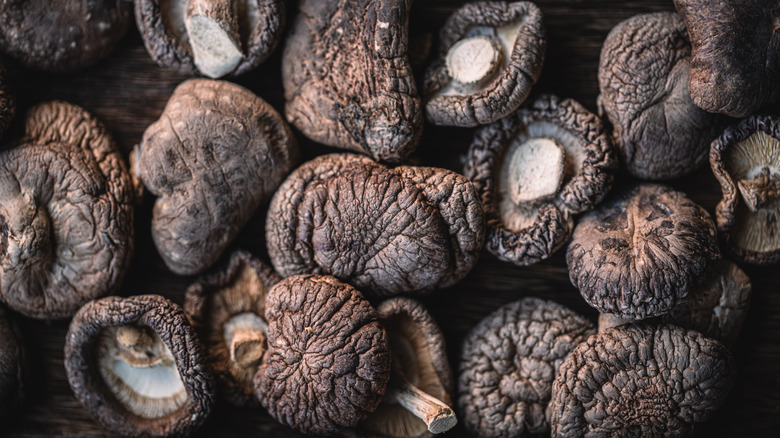14 Things You Didn't Know Your French Press Could Do
The French press is an ingenious little invention. One part science, one part art, it's the ideal way to get smooth, mellow coffee for one or two, without having to go to all the trouble of brewing up a big pot in the coffeemaker. Plus, it's how Martha Stewart makes coffee, and it's just so dang Instagrammable.
A French press is an all-in-one device comprising a glass cylinder and a plunger with a fine-mess sieve. You place your grounds on the bottom, then pour hot water in and let the coffee steep, after which you press down on the plunger to trap the grounds at the bottom. It couldn't be easier.
But if you're going to go to all the trouble of getting a French press, you want to know it's worth it. Sure, it's no bigger than a quart of milk, but you still have to find space for it on the counter or in the cupboard. For that reason, it never hurts to learn more creative ways to put your French press to work in the kitchen. Here are 14 to get you started.
1. Make flavored coffee
Let's start with an obvious twist: flavored coffee. The French press is a forgiving tool, you see. Unlike an electronic coffee maker, it's simply glass and metal, and is as durable as you'd expect those materials to be. While you can't abuse glass, a well-made French press will hold up for years of careful use, even with untraditional ingredients.
Therefore, you can throw extras in while brewing coffee to your heart's content, including but not limited to cinnamon sticks, vanilla pods, grated nutmeg, cocoa powder, and crushed cardamom. And just like that: flavored coffee, on the house. The length of time you need to let your coffee steep to extract the flavors will depend on what you use, whether it's ground up, and how strongly you want that flavor to come through. Try Googling your preferred flavor combos to get exact ingredient amounts and times, as there are endless recipes online.
2. Cold brew coffee
Everyone loves cold brew coffee. Its smooth, rich, chocolatey flavor (and low acid content compared to regular coffee) endear drinkers — particularly those who prefer not to worry about indigestion — to it. Cold brew can be pretty expensive from a shop, but did you know the French press can brew coffee cold as well as hot? All you have to do is leave the grounds in there between 12 and 24 hours, so make sure your press isn't needed for anything else in the meantime.
Note, however, that you can't simply measure out the same ratio of coffee and water as you would for the coffeemaker, or even other types of coffee. Instead, follow a recipe specifically intended for cold brewing for best results. Note also that recipes range regarding coffee-to-water ratios. Some say 1:4 cups, while others say 1:6 by weight. Find the recipe you want to try, experiment, then try again. And take heart: you can flop over and over again and still not pay what you would for cold brew at the drive thru.
3. Steep loose-leaf tea
If you're like most people, the idea of loose leaf appeals in theory much more than it does in practice, mostly because it's impossible to pour a cup without dregs. Even, somehow, the first cup, which is beyond frustrating for anyone (this writer) who has an adorable tea set they just can't stand to use due to all the little floating bits. Even tea balls don't work very well and are a pain to fill and close on top of everything else.
French press to the rescue; if it can keep out a coffee ground, you know it can handle tea leaves. Generally, you can use a teaspoon of loose-leaf tea for every cup of hot water in your French press, an easy recipe to double or triple (or more, depending on the size of your press) if you're serving a crowd. Make sure to read the notes on your tea to determine how long to steep it for, though; tea gets bitter if you leave the leaves sitting too long.
4. Make your own tea combinations
Homemade chai tea? Would anyone even say no? If you love getting creative in the kitchen, then don't stop at pre-made tea blends. The French press lends itself to a wide variety of both hot and cold tea and flavor combinations, and you can concoct many of them yourself, saving money (though definitely not time).
To make homemade French-pressed chai, assemble the main ingredients, which include black tea (Assam is good), ginger, turmeric, cardamom, vanilla, and milk. Combine the spices, tea, and milk at the bottom of the press, then pour the water over and let it sit for your desired length of time, usually between 5-7 minutes. Then plunge and pour, pumping the plunger a bit for froth if you like.
To make other blends, choose a flavor profile (herbal, citrusy, earthy) and assemble your ingredients around that. Try spices, herbs, dried fruit, peel, and more. Let steep, then drink hot or iced.
Similar to iced tea, you can also combine basil, lemon, and simple syrup to make amazing herby lemonade. Juice about two lemons, add about 3 cups cold water and some chopped basil, then add simple syrup to taste, starting with about ¼ cup for those who don't like their drinks too sweet. Let it steep for around 10 minutes before pressing and adding more syrup if needed. Best of all, you don't need to remove the lemon juice and pulp beforehand, as the press will do that for you.
5. Drain stock
Straining stock is a heinous task, period. It's sloppy, thankless work that always requires as much time to clean up as it did to make and strain the thing in the first place. But the most annoying part? Never getting the last of the good stuff on the bottom because it's full of bone bits. Well, no longer. Now you can use your French press to strain soup stock and get every last bit of expensive bone or veggie broth you make.
If you make only a bit of broth, you can pour all of it, including the aromatics and bones, into your French press and press gently with the plunger to extract all the goodness. On the other hand, if you've made a large volume of stock, you may need several trips through the press. Just make sure to rinse the sieve if it starts to get blocked up or it won't strain well. If you expose your French press to meat, make sure to run it through the dishwasher. Most are made to withstand this, but check. If not, wash well by hand.
6. Infuse water and oil
Cucumber mint water is no longer reserved for the spa. Now you can make it at home easily, extracting every last drop of flavor from your beverage by using a French press. Simply place your flavorings into the water and put the press in the fridge overnight. In the morning, press down on the plunger and pour out a refreshingly cool pick-me-up.
Flavor combinations, you ask? Any time. Aside from ye olde cucumber-mint, you can also try mixing some honeydew in with the other two flavorings, about ½ cup of cubes to one cucumber and a handful of torn mint leaves. Other amazing combos include blueberry, lemon, and rosemary; watermelon and lime; or mango, raspberry, and ginger. Honestly, you can mix pretty much every fruit and every herb up together and, as long as you don't go overboard on the number of ingredients you use, it'll be pretty good.
Note that you can also infuse oil, which turns an ordinary substance into something sublime. Whether you like garlic, basil, hot chiles, or anything else, the French press makes infusing oil easy and fun. Generally, a few days in the fridge will extract enough flavor, but you should try it before plunging in case you want to get a stronger brew.
7. Froth milk
Everyone loves frothed milk, but almost no one loves futzing with the espresso maker when all they want is a quick cappuccino. No longer an oxymoron, the "quick cappuccino" can be yours with just a little help from your friendly French press.
Now, frothing milk is an interesting scientific process. You'd think it was the same as steaming milk, but in fact, you can introduce air bubbles into milk that is stone cold just as you can into hot milk, though the bubbles will be larger and perhaps less stable, depending on the kind of milk. In general, if you're frothing milk, you should make it hotter than 113 degrees Fahrenheit for whole milk and cooler than 113 degrees for skim milk in order to retain the bubbles effectively.
The good news is, this means you can use the French press to create cold foam if you prefer that to hot. Simply put your hot or cold milk into the press with enough space for it to double in volume. Then plunge until it doubles, which should take around 30 seconds. When you've hit your desired foaminess level, top your favorite coffee or tea and enjoy.
8. Whip cream
As if frothing milk weren't enough, you can even whip cream in a French press! The exclamation point is totally deserved when you consider that it only takes 30 seconds and one messy tool to get perfect puffy whipped cream for your cakes, pies, and coffee. (Sound too good to be true? Don't knock it till you've tried it.)
Now, unlike frothing milk, you need to keep your cream quite cold in order to maintain its whip without melting. That might sound counterintuitive, considering the above section advises warming milk up the higher the fat content in order to create froth. The reason that's true is because richer milks or cream, when cold, contain tons of fat globules that don't contain air well. When you heat them, the fat melts so it can curve around and trap large air bubbles for froth.
However, for whipped cream, you want those air bubbles small and not foamy, because perfect whipped cream is super silky. Plus, if it is warm, the fat will melt and release air. This usually isn't a problem for a drink, which will get consumed before the foam dies. But for whipped cream, you want it to maintain its shape for a while, so keep it cold. To make the cream, add 1 cup of heavy cream, 2 tablespoons of sweetener, and ½ teaspoon of vanilla to the press, then plunge up and down for about 30 seconds. Voilà!
9. Make guacamole
Full disclosure time — sometimes, here at Chowhound, the writers just really enjoy seeing what the internet can come up with given enough time, creativity, and server space. One of its best recent gifts was this one: Make guacamole in your French press. Look, you've got a mashy thingy and some avocados, right? Obviously that equates to guacamole!
To this idea, fun as it sounds, one must add the caution to mash slowly your first time. Not all French presses are sturdy (and too many avocados still are, despite a promising black peel). If you're going to try guac in the press, use very soft and ripe avocados and cut them up before adding them to the cylinder. Then press gently up and down, until you reach the desired consistency. You probably want to check before going too gung-ho, otherwise you may end up with cream.
Pull your guacamole out before adding seasonings such as salt, pepper, garlic powder, raw garlic, cilantro, jalapeño, and/or lime. Or, if you're feeling lazy/ingenious, go ahead and just dump some pico de gallo into the mix and call it good.
10. Press apples into cider
Perfect for the crisp fall months, apple cider is beloved by many and enjoyed as a drink both hot and cold. Sadly, its deliciousness is often overshadowed by its price, meaning many a shopper leaves the store without it. But with the French press, a pot or slow cooker, and a little time on your hands, you can make it yourself.
Use a mixture of roughly 10 chopped apples, ¾ cups of sugar, and a tablespoon each of cinnamon and allspice. Pour enough boiling water over it to ensure the bottom doesn't burn (usually about an inch), then cook on the stovetop for about 2 to 3 hours. The juice from a squeezed lemon or orange will also taste delicious, but that's optional.
As with stock, you must eventually strain your creation, but the French press will turn your stovetop apple stew into delicious, finely sieved cider in just minutes. Just ladle it into the press bit by bit, trying to portion out the apples and liquid evenly, but no need to be too fussy about this. Apples are very watery and will release lots of juice either way. Just plunge, pour, remove pulp, and go again.
11. Juice berries and remove citrus pulp
Love fresh raspberry muddled in a drink, but don't want the seeds? Need fresh grapefruit juice for a sparkling drink, but don't like having to chew on it? That's where the French press comes in once more, helping you remove pulp, seeds, and fibrous tissue from fruit juices before you add them to drinks (or consume them plain).
To do this, simply add your fruit or already juiced liquid to the cylinder of the French press. Gently push down on the plunger until it stops, either because it hits the bottom or is blocked by debris in the juice, then pour it out. Note that you probably don't want to use the press for straining large chunks of fruit, though, as it won't be all that effective. However, adding some water can help you do a better job extracting the juices and oils from fruits like oranges.
12. Rehydrate dried goods
Rehydrating dried goods can be an annoying task. It's hot, messy, and difficult to strain once you do. This is especially true for dried mushrooms and the weird dirty bits that float around in the water after soaking. Believe it or not, a simple coffee maker is key to rehydrating dried mushrooms, adding dried mushrooms and boiling water to it, then letting it sit for the desired amount of time. Once time's up, strain the liquid for a dirt-free experience, then wash your leftover mushrooms for addition to your soup, stew, or risotto.
Mushrooms aren't the only dried ingredient you can do this for either. Dried tomatoes, peppers, and onions all work well too. And since the sky's the limit when it comes to dehydrated veggies (seriously, everything you can think of exists), this is a versatile technique. It's also not a bad idea to press the plunger past the water line to ensure whatever you're rehydrating stays submerged.
13. Make amazing mixed drinks
If you don't have a fancy cocktail shaker, put your fears to rest. You can use your French press to remove unwanted bits from your creations. Even if you do have a bar set, it's still worth looking into using your French press for making mixed drinks, since you can easily whip up roughly four cocktails in the same amount of space offered by a small shaker. Plus, this writer finds that a French press has an even better straining capacity than a cocktail shaker by dint of the fact that it's made to deal with coffee grounds, which as you know are teeny tiny yet still extremely annoying on the palate.
The French press is amazingly versatile in the ingredients it can handle, too. Muddle fruit, squeeze citrus, and crush mint to your heart's content, and the French press will leave you with nothing but a smooth liquid once you pour. It's an especially great tool for chunky drinks like sangria or other cocktails that use a lot of fresh fruit and herbs.
14. Flavor your beer
From chocolate to mint to mango to citrus, there are all kinds of flavorings you can use to improve your beer experience, whether you bought it from the store or sourced it from your own basement brewpub. You can even make your beer hoppier. Yes, hoppier. Because for some people, beer just can't ever be hoppy enough ... and that's where your French press comes in, letting you soak hops in beer before consuming. While it won't make the beer more bitter (a role hops play during fermentation), you will get more of that grassy taste going on.
Other French press combos that work well include mint and lime with Belgian ale, mango and hops with IPAs, and cocoa nibs with framboise. You can also add coffee grounds, oak, cocoa nibs, or coconut to stouts for a richly flavored brew that will put some hair on your chest. Watch out, ladies: that includes you. Again, Google for specific amounts in the recipes that appeal to you.
